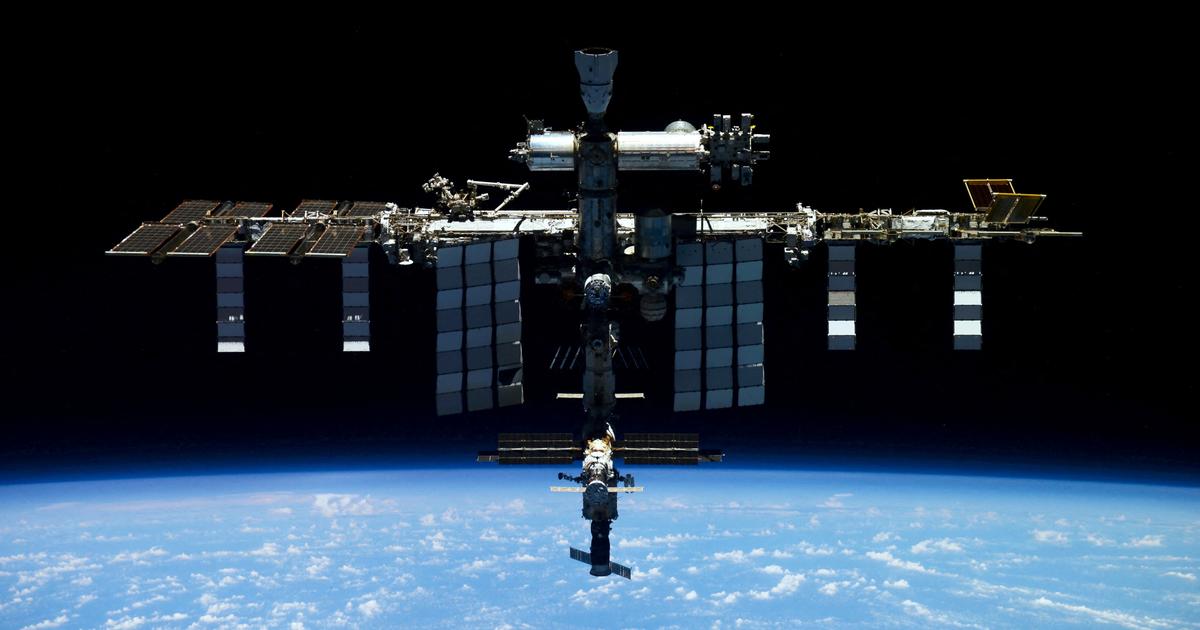On Friday February 24, the Russian space agency Roscosmos sent a rescue flight to the International Space Station (ISS) to replace a damaged Soyuz shuttle.
In December, the Soyuz MS-22 spacecraft, docked to the ISS and which was to bring back to Earth the American Frank Rubio and the Russians Sergei Prokopiev and Dmitry Peteline, suffered an impressive leak, due according to Moscow to the impact of a micrometeorite.
"
The official hypothesis still raises some questions
," comments Paul Wohrer, researcher for the Strategic Research Foundation.
The specialist in space issues explains to Le
Figaro
the ins and outs of this rescue mission.
LE FIGARO.- Concretely, what problem does this incident present? Is a cooling system leak a danger to astronauts?
Paul WOHRER.-
When a crew of astronauts joins the ISS for a mission, they arrive on board a capsule.
This then docks with the space station for the duration of the mission - most of the time for a period of six months.
Once stowed, it shares a large part of the life support system: air renewal, ventilation, dehumidification and heat removal.
Read alsoWhat future for the International Space Station after the surprise announcement of the Russian withdrawal?
Throughout the duration of the mission, the capsule is maintained in operational condition.
This means that she can leave at any time in case of an emergency.
And once the mission is complete, the crew returns to Earth aboard the latter, usually within a few hours.
Russian cosmonauts Sergey Prokopyev and Dmitri Petelin and NASA astronaut Frank Rubio on September 21, 2022. NATALIA KOLESNIKOVA / AFP
A leak in the cooling system then poses several concerns.
First, a temperature problem.
Contrary to what one might think, it is very difficult to evacuate heat in space.
In this specific case, the temperature rose to 30 degrees inside the capsule, even though it was attached to the ISS.
The first analyzes seem to show that, during the return journey of the capsule to return to Earth, the temperature could have risen to around forty degrees.
It could have been worrying if other problems had emerged.
Then, it posed the concern in the case of an emergency evacuation.
This is one of the reasons why, a few days ago, the astronauts moved the seat of the American astronaut inside the dragon capsule, an American capsule which is docked to the ISS at the moment.
In an extreme case, the Russian cosmonauts could have returned with lower temperatures.
The American could also have returned to Earth under correct conditions.
This is a temporary measure while waiting for the new Soyuz spacecraft to dock with the ISS.
To sum up, it is not an impression of danger that emerges when one reads the NASA press release.
This is a problem that requires logistical changes, but there are no immediate dangers or sense of urgency.
Do we know the origin of this incident? Are there other hypotheses?
According to the Russian space agency Roscosmos, the leak is due to the fall of micrometeorites observed in mid-December.
This is the official explanation accepted by NASA.
It turns out that, a few days later, the cargo ship Progress, built on the same model as the Soyuz capsule, also had a leak in the same place as the coolant.
The official hypothesis, even if it has been accepted by both sides, still raises certain questions: are we not here faced with a production problem, knowing that we had another leak problem? on a Soyuz capsule in 2018. We are entitled today to ask ourselves questions, even if the two space agencies are probably not worried at this level.
The leak happened on December 15, 2022. If it posed a danger to the astronauts, why did it take them so long to send a rescue shuttle?
The situation presented no immediate danger.
Second thing: we do not necessarily have capsules available, or available to be launched under sufficient security conditions, to launch it quickly.
An operation calculation was made and it probably resulted in demonstrating that it made more sense to carry out this procedure in that direction, rather than sending a capsule urgently when the situation did not require it.
They are also asking astronauts to stay until September 2023, a year after they launch into space. Doesn't that pose a health hazard to the crew?
If NASA and Roscosmos have come to an agreement, it is probably because this does not pose any problems for the crew.
There have been space trips that have been longer.
In 2015, there are American astronauts who stayed a year on board the station for an experiment that was planned, but we also have the example of the world record of 437 days in space aboard the Mir Station - so it's a year and a half.
These are durations that are feasible, there are probably no health problems behind.
If the astronauts have health issues on board, or whatever, they'll have this brand new shuttle that's going to dock with the space station in a few days.
The most important thing is that they can come back.

